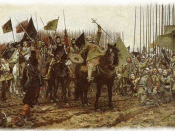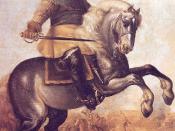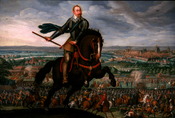��Updegrove � PAGE \* MERGEFORMAT �5���
Sweden at War:
The Battle of Breitenfeld
Craig A. Updegrove
Military History 201
Prof. Angela Gunshore
May 29, 2014
Introduction
Early in the seventeenth century, Protestantism was spreading across Germany. To counteract the spread, the Holy Roman Emperor began to forcefully push them back. His plans were to reconvert them back to Catholics. The Protestants stood their ground, and Swedish King Gustavas Adolphus became their champion. He is now called the "Father of Modern Warfare" because of his unique tactics and innovative weapons. This was the beginning of the Thirty Year War.
Weapons and Tactics
After fighting the Russians and the Poles He saw that tactics were out of date and needed to change. The models and tactics used for the Thirty Year war was fashioned after the Spanish Tercios and the Dutch Battalions. Spanish Tercios was a rough Square shape which allowed only 50 percent of its strength to be used at one timeâ¦which was good for defense, but was immobile.
The Swedish formations were more flexible and lent speed and responsiveness to their movements, because of the ability of movement, not only forward, but side to side. It was vulnerable to cavalry charges, but could be reinforced quickly. The firearms used were the Musket which was slightly longer owing for more accuracy. It had a bore of .66. A good Swedish musketeer could fire 3 shots a minute, due to drill and training, and the Catholics could fire only 1.
The Swedish Cavalry was very different. Most armies in Western Europe had their Calvary carry small matchlock pistols. They would ride within range of the opposite lines, discharge their pistols and return to their lines to reload. The pistols did little in the way of damage. The Swedish Calvary used the lance...


